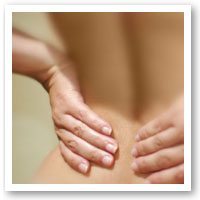 Statistically more than half of Australians have a bulging disc in their spine. Many people are extremely concerned when think they may have a bulging disc (also referred to as a ‘slipped disc’), but it is often not as dire as it may sound. The most common site for a bulging disc is L4/L5 disc, then L5/S1 disc, (the last 2 levels of the spine), and discs in the lower neck are also common. Bulging discs can present with a wide range of symptoms, with 20%-35% of adults with a bulging disc having no symptoms. While others may experience a range of symptoms which can be mild pain, significant pain or more serious symptoms such as numbness or tingling in the leg, loss of muscle strength in the legs, to extreme pain and an inability to walk.
Statistically more than half of Australians have a bulging disc in their spine. Many people are extremely concerned when think they may have a bulging disc (also referred to as a ‘slipped disc’), but it is often not as dire as it may sound. The most common site for a bulging disc is L4/L5 disc, then L5/S1 disc, (the last 2 levels of the spine), and discs in the lower neck are also common. Bulging discs can present with a wide range of symptoms, with 20%-35% of adults with a bulging disc having no symptoms. While others may experience a range of symptoms which can be mild pain, significant pain or more serious symptoms such as numbness or tingling in the leg, loss of muscle strength in the legs, to extreme pain and an inability to walk.
Only a small percentage of these cases will need invasive treatment such as Steroid injections or surgery. The vast majority will improve with rest and other treatments. Doctors will usually prescribe rest and anti-inflammatories and some physical therapy such as Physiotherapy.
How do discs bulge and is Chiropractic safe?
A bulging disc will either be caused by an injury directly to that vertebra and disc, which usually occurs with a sudden compression (squashing) force on the disc from the vertebra above and below. This is similar to squeezing the buns of a burger together and having the filling squeeze out the sides. A minor degree of bulging may occur together with some inflammation, which can result in the disc pushing out and onto either the spinal cord or adjacent nerves, creating some pain in the area and irritation to the nerves and hence some nerve symptoms. An injury like this may be quite significant and result in a greater degree of bulging and therefore greater pressure on the spinal cord or the nerves, or if even more damage has occurred it may cause some of the disc to actually break off and this can then move around freely.
With this kind of injury Chiropractic treatment can be effective to varying degrees. In the extreme cases the improvements may be limited as there has been more damage to the disc itself, and it is these cases that may end up with steroid injections or even surgery. Chiropractic may be useful in taking some pressure off the disc and associated joints, and allow the inflammation to reduce, and reduce the pain symptoms, but if there is disc material floating around the potential for nerve symptoms will remain. The treatment is done very carefully and gradually, and at times rest and some anti-inflammatories are also helpful.
A disc may also bulge as a result of pressure on the disc from primary forces further away. Other imbalances in the spine or pelvis, or injuries to other areas of the spine or pelvis can cause secondary pressure on the disc. This will usually only cause a lesser degree of bulging with most likely some pain and stiffness, and possibly mild nerve symptoms such as tingling or a small degree of numbness. Chiropractic is usually very effective in treating this cause of a disc problem, this is done by treating the primary injury which will then remove the aberrant forces affecting the disc., while rest and anti-inflammatories are less beneficial in these cases as they just address the symptoms but not the cause.
At Health In The Bay, the Chiropractic method of treatment is very gentle and ideal for treating disc issues safely.


